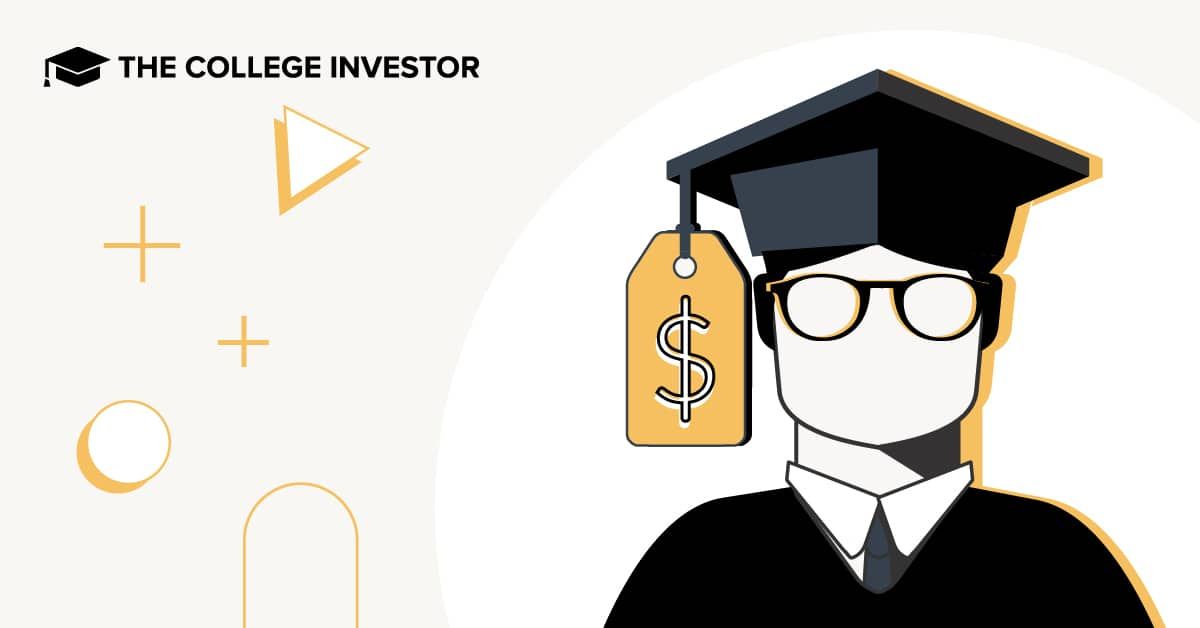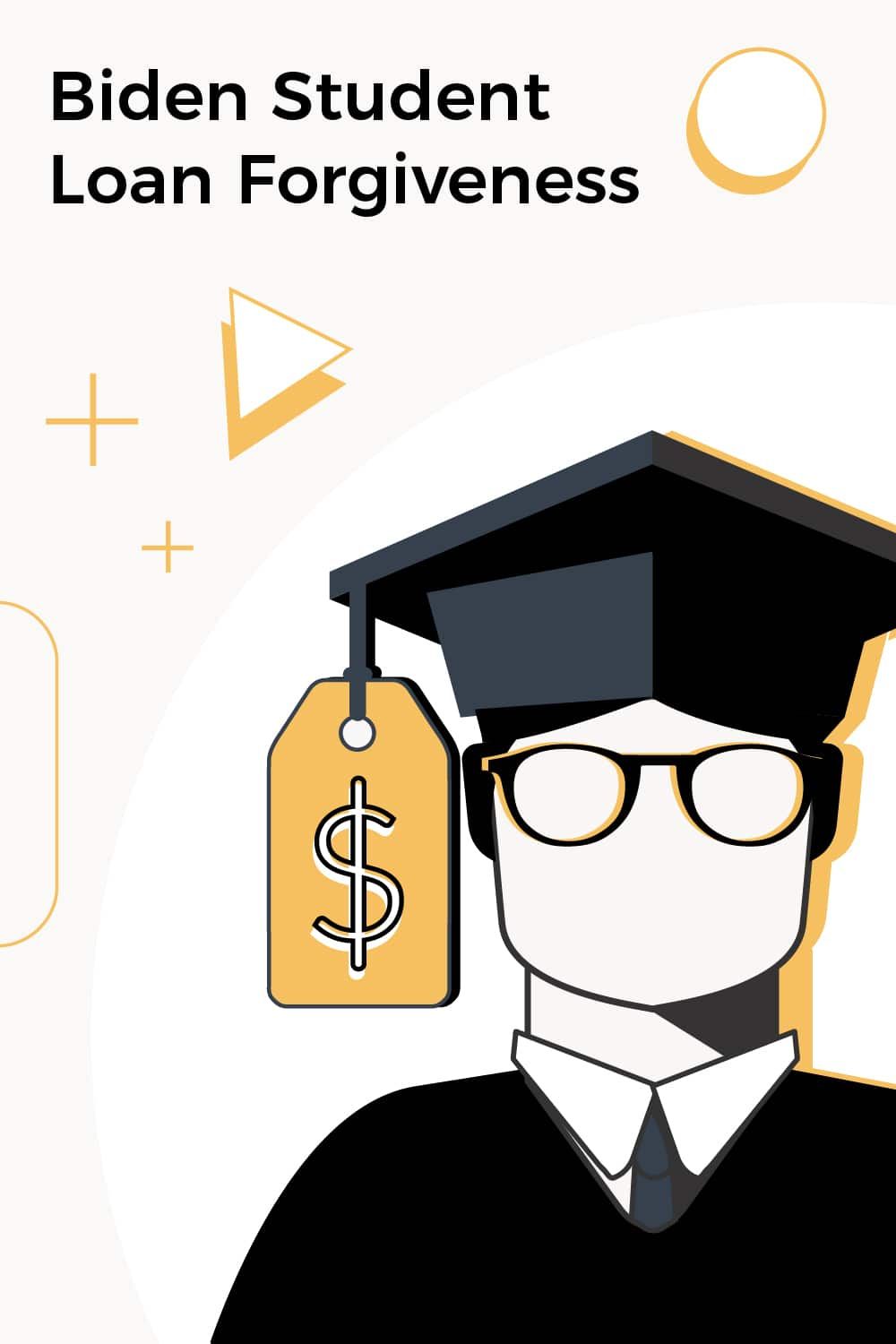
Update: On June 30, 2023, the U.S. Supreme Court struck down President Biden's student loan forgiveness plan.
On August 24, 2022, President Biden announced that the U.S. Department of Education will fulfill the President’s campaign promise to forgive federal student loans. He proposed cancelling $10,000 to $20,000 in student loans for qualifying borrowers, as well as rapidly implementing a new student loan repayment plan.
This article provides a guide to the details of the President’s plan, including the amount of student loan forgiveness, eligibility restrictions, types of eligible loans, the implementation timeline and the impact of the plan. It also highlights the potential for legal challenges that borrowers should be aware of.
Editor's Note: This article has been updated to include the latest FAQs from the Department of Education, as well as updates to the student loan payment pause.
Amount Of Student Loan Forgiveness
President Biden's student loan forgiveness plan provides for $10,000 to $20,000 in student loan forgiveness.
Borrowers who previously received a Federal Pell Grant will receive up to $20,000 in federal student loan forgiveness.
Other borrowers will receive up to $10,000 in federal student loan forgiveness.
The amount of student loan forgiveness is capped at the amount of student loan debt, so the amount of student loan forgiveness may be less than these thresholds.
Borrowers who made payments on their eligible federal student loans during the pandemic may ask for a refund of those payments by contacting their loan servicer. Borrowers whose debt is less than the $10,000 or $20,000 thresholds, as applicable, may wish to ask for a refund of the payments they made since March 2020. Refund requests may take up to 60 days to process.
You Can Request A Refund Of Your Student Loan Payments
If you made student loan payments during the Covid-19 forbearance (since March 2020), you can contact your loan servicer and request a refund. Here's our guide to getting your student loan payments refunded.
Approximately 60% of undergraduate student borrowers received a Federal Pell Grant in college. The percentage is closer to 50% when graduate student borrowers are included.
Based on data from the 2015-16 National Postsecondary Student Aid Study (NPSAS), Pell Grant recipients are almost twice as likely to graduate with federal student loan debt (73.6% vs. 39.2%) and the average student loan debt at graduation is more than $4,500 greater ($23,625 vs. $19,092).
Eligible Borrowers
Borrowers who were undergraduate students, graduate and professional school students, and parents of dependent undergraduate students are eligible for the student loan forgiveness.
The borrower’s income during the pandemic (2020 or 2021) must be less than $125,000 for individuals and $250,000 for married couples or heads of households. We don't officially know what metric of income will be used, but we assume it will be Adjusted Gross Income (AGI).
Current students are eligible. If the student is a dependent undergraduate student, eligibility will be based on the parents’ income. If the student is independent, eligibility will be based on the student’s income.
Eligible Loan Types
Eligible loans include all federal education loans held by or on behalf of the U.S. Department of Education. This is the same as the loans that were eligible for the payment pause and interest waiver during the pandemic.
In particular, it includes loans in the William D. Ford Federal Direct Loan Program (Direct Loans), loans in the Federal Family Education Loan Program (FFELP) that were made in 2008-09 or 2009-10 under the Ensuring Continued Access to Student Loans Act (ECASLA) and defaulted FFELP loans. A small number of Federal Perkins Loans are eligible because they are managed by the U.S. Department of Education.
Loans borrowed by undergraduate students, graduate and professional school students, and parents of dependent undergraduate students are eligible. This includes subsidized and unsubsidized Federal Stafford Loans, Federal Parent PLUS Loans, Federal Grad PLUS Loans, and Federal Consolidation Loans.
Defaulted loans are eligible. Remember, you can also take advantage of the Fresh Start program to get your defaulted loans back in good standing.
Commercially-held FFELP loans and Federal Perkins Loans held by a college are not eligible. However, these loans may be made eligible by including them in a Federal Direct Consolidation Loan, as long as the consolidation was done prior to September 29, 2022.
Loans must have had their first disbursement by June 30, 2022. However, borrowers may consolidate FFELP loans into a Federal Direct Consolidation Loan using a later cut-off date of September 29, 2022.
Private student loans are not eligible.
Eligible Loans
Ineligible Loans
Biden Loan Forgiveness Order Of Operations For Forgiveness
If you have multiple loans, there is an order of operations that student loan forgiveness will be applied in. Here is how loan forgiveness will be applied:
- Defaulted Department of Education held loans
- Defaulted Commercially-Held FFEL Loans
- Non-defaulted Direct Loan Program loans and FFEL Program loans held by ED
- Perkins Loans held by ED
Note, if you have multiple loans in the same program, they will receive forgiveness in this order:
- Highest interest rate first
- If same interest rate, unsubsidized loans before subsidized loans
- If rate and subsidy status are the same, most recent loan first
- If all else is the same, apply to the lowest balance first
Taxability Of Biden's Student Loan Forgiveness Plan
The student loan forgiveness will not be considered taxable income on the borrower’s federal income tax return. The American Rescue Plan Act of 2021 made student loan forgiveness tax-free through December 31, 2025 for federal income-tax purposes.
However, the student loan forgiveness may be taxable on state income tax returns. More than one-third of states do not follow federal definitions of taxable income. However, the state income taxes on the forgiveness are the equivalent of less than a year’s worth of loan payments.
Timing Of Student Loan Forgiveness
If the U.S. Department of Education already has the borrower’s income information, the forgiveness will be automatic. The U.S. Department of Education has income information for approximately 8 million borrowers who have submitted the Free Application for Federal Student Aid (FAFSA) recently or who are participating in an income-driven repayment plan.
Other borrowers will have to complete a simple application form, which will become available in early October 2022.
Forgiveness will occur within 4-6 weeks of submission of the forgiveness application, according to the Department of Education.
Borrowers who wish to receive forgiveness before the restart of repayment in January 2023 should apply by November 15, 2022.
The final application deadline will be December 31, 2023. Applications will be processed as they are received up until this deadline.
What Should Student Loan Borrowers Do?
Borrowers should update their contact information with their student loan servicer and on StudentAid.gov, to make sure they get any announcements related to the student loan forgiveness and restart of repayment.
If borrowers have any FFELP loans, they should consider including them in a Federal Direct Consolidation Loan immediately. Consolidation loans are available through StudentAid.gov. However, this must be done prior to September 29, 2022.
Borrowers should look for a student loan forgiveness application to become available in early October 2022.
Borrowers can receive Federal Student Loan Borrower Updates by signing up at www.ed.gov/subscriptions.
Final Extension To The Student Loan Moratorium
Editor's Note: Congress passed the Fiscal Responsibility Act of 2023 that requires student loan payments to resume in September 2023.
By the restart of repayment, borrowers will have received over 40 months of paused payments, at a cost to the federal government of slightly less than $5 billion per month in waived interest.
Related: Does The Government Profit Off Student Loans [The Math Of How Student Loans Work Fiscally]
Impact Of Biden's Student Loan Forgiveness Plan
According to the U.S. Department of Education, most of the forgiveness will benefit low- and middle-income borrowers. 87% of the student loan forgiveness dollars will go to borrowers who earn less than $75,000.
About 25% to 33% of borrowers will have their federal student loan debt completely erased.
The total cost of the President’s plan will be more than $350 billion, if all eligible borrowers apply for student loan forgiveness. However, the budgetary cost to the federal government may be lower than that, because some of the student loan debt would eventually have been forgiven, such as the remaining debt of borrowers in income-driven repayment plans and borrowers who will qualify for Public Service Loan Forgiveness. For these borrowers, the President’s plan merely alters the timing of the forgiveness, giving it to them now instead of later.
Despite the high cost of the student loan forgiveness, it will have a minimal impact on the economy and will not contribute much to inflation. The forgiveness is limited to borrowers whose payments have been paused, with no interest accruing, so forgiving the debt will not increase spending by eligible borrowers. There will be no incremental impact on inflation.
Even if there were an impact, student loan payments are a very small fraction of GDP, meaning that there will be no meaningful stimulative or inflationary impact. But, the restart of repayment in 2023 will offset any inflationary effects.
New Income-Driven Repayment Plan
President Biden also announced the creation of a new income-driven repayment plan, tentatively called Expanded Income-Contingent Repayment (EICR).
The monthly loan payments will be based on 5% of discretionary income for undergraduate student loans and 10% of discretionary income for graduate and professional school loans. If a borrower has both types of loans, the percentage of discretionary income will be based on a weighted average.
Discretionary income will be defined as the amount by which adjusted gross income (AGI) exceeds 225% of the poverty line.
Accrued but unpaid interest will be waived, so the loan balance will not increase even if the loan payment is less than the new interest that accrues.
There will be no need for annual recertification, as the U.S. Department of Education will be able to pull the borrower’s income information automatically.
The remaining debt will be forgiven after 10 years if the original loan balance was under $12,000, and 20 years otherwise. Most students who borrowed for community college will qualify for forgiveness after 10 years.
The U.S. Department of Education is also planning permanent changes to Public Service Loan Forgiveness (PSLF). These changes will allow partial, lump sum and late payments to count toward forgiveness. Deferments and forbearances for Peace Corps, AmeriCorps, National Guard and military service will also count.
This new income-driven repayment plan will be published as a Notice of Proposed Rulemaking (NPRM) in the Federal Register, followed by a 30-day public comment period. The final rule will be published by November 1, 2022, so the new repayment plan will become available on July 1, 2023.
Potential For Legal Challenges
The U.S. Department of Education claims that the legal authority is based on the waiver authority in the Heroes Act of 2003.
This claim is based on an expansive interpretation of the law, which may be subject to legal challenge.
Only Congress has the power of the purse, per Article I, Section 7, Clause 7 of the U.S. Constitution and the Antideficiency Act (P.L. 97-258).
In addition, the U.S. Supreme Court’s decisions in West Virginia v. Environmental Protection Agency (2022) and Whitman v. American Trucking Assns., Inc. (2001) may lead to the President’s plan being blocked by the courts. The major questions doctrine requires unambiguous legislation authorizing an action in situations involving “vast economic and political significance.” Inferring the authority for an action may not be sufficient.
The President’s plan also fails to comply with the text of the Heroes Act of 2003, which seeks to ensure that affected individuals are no worse off, not better off, and limits affected individuals to those who suffered direct economic hardship as a result of the national emergency.
As a result of this action, several legal challengers have been filed.
Related: Is Student Loan Forgiveness By Executive Order Legal?

Mark Kantrowitz is an expert on student financial aid, scholarships, 529 plans, and student loans. He has been quoted in more than 10,000 newspaper and magazine articles about college admissions and financial aid. Mark has written for the New York Times, Wall Street Journal, Washington Post, Reuters, USA Today, MarketWatch, Money Magazine, Forbes, Newsweek, and Time. You can find his work on Student Aid Policy here.
Mark is the author of five bestselling books about scholarships and financial aid and holds seven patents. Mark serves on the editorial board of the Journal of Student Financial Aid, the editorial advisory board of Bottom Line/Personal, and is a member of the board of trustees of the Center for Excellence in Education. He previously served as a member of the board of directors of the National Scholarship Providers Association. Mark has two Bachelor’s degrees in mathematics and philosophy from the Massachusetts Institute of Technology (MIT) and a Master’s degree in computer science from Carnegie Mellon University (CMU).
Editor: Robert Farrington Reviewed by: Chris Muller
